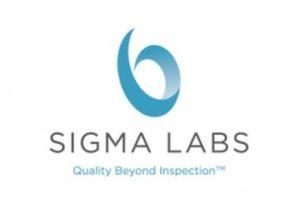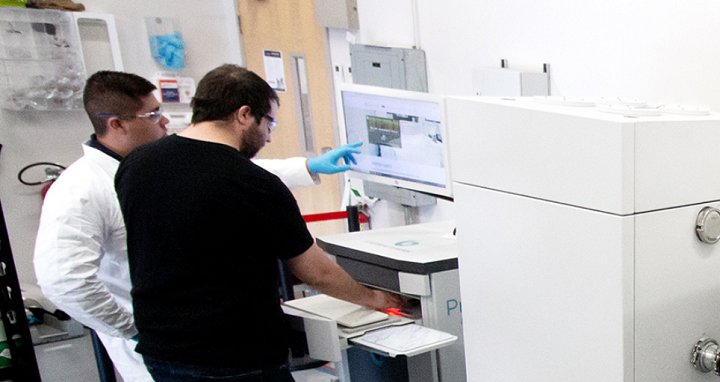This week, AM quality assurance software developer Sigma Labs, Inc. launched the new Production Series of its PrintRite3D software. 3D printing is fairly responsive in a crisis situation, as it is a more agile and rapid manufacturing method and can be used to build products in close proximity to where they are needed. That’s why it was serendipitous to launch the series now – many in the industry are predicting that we will see a drastic uptick in 3D printed metal parts as the US manufacturing industry reacts to the COVID-19 pandemic.
Manufacturers use long, complex supply chains, and the PrintRite3D Production Series can help cut down the design and development process, in addition to speeding up 3D printing qualification. Not only does PrintRite3D offer real-time, remote monitoring from anywhere in the world, but the new series is also a new Production Dashboard, which provides managers with important AI-driven metrics and, according to Sigma, “actionable information” during 3D print jobs.
“Sigma Labs has a rich history of innovation. PrintRite3D® Production Series is the culmination of years of internal research and development and radical collaboration with our customers,” said Mark K. Ruport, the Executive Chairman of Sigma Labs. “We believe it will be seen as a major advancement for the additive manufacturing industry just as 3D printing of metal parts will be tested and challenged to fulfill the promise of being the next revolution in manufacturing.”
 Sigma is unique, as its technology can work with most major 3D metal printer brands. This is especially helpful now during the worldwide COVID-19 crisis, as manufacturers are in need of faster production alternatives like 3D printing. Because PrintRite3D software is machine-agnostic, manufacturers can achieve standardized QA processes, even with a supply chain that uses different 3D printers.
Sigma is unique, as its technology can work with most major 3D metal printer brands. This is especially helpful now during the worldwide COVID-19 crisis, as manufacturers are in need of faster production alternatives like 3D printing. Because PrintRite3D software is machine-agnostic, manufacturers can achieve standardized QA processes, even with a supply chain that uses different 3D printers.
“Bringing Sigma’s technology down to the manufacturing floor to be used by production managers to monitor the 3D printing process is a major step forward for the AM industry. PrintRite3D® Production Series addresses one of the critical barriers of the industrialization of additive manufacturing and puts highly sophisticated tools in the hands of the printer operators. Additionally, the fact that Sigma’s technology can be used today on 3D printers from multiple manufacturers to provide a consistent standard of quality assurance, allows manufacturers to deploy the technology throughout their supply chain,” said Dr. Prveen Bidare, Technical Research Officer in Hybrid Manufacturing at the University of Birmingham.
The intuitive dashboard that comes with the new PrintRite3D Production Series is an extremely helpful tool for production managers, as it offers actionable information and “in-process quality metrics,” such as automated In-process Quality Metric (IPQM) based alerts. These make the manufacturing process more efficient, as production managers can use “custom metric thresholding” to make decisions about part and process quality. The process engineer can rest assured that the process was in control, and production managers will know part yield predictive performance.
The PrintRite3D Production Dashboard also comes with high-resolution IPQM medical-grade 3D forensic analysis, which gives the build process a “level of granularity” that wasn’t possible before. This feature is used to investigate process engineering part anomalies – the process engineer can use the dashboard to gain a better understanding of 3D anomalous IPQM signatures and their specific morphologies, which will ensure continuous process improvement. In the dashboard, the IPQM is also trained with machine learning algorithms through “micro CT-based on standard additive defects,” so it’s easier to spot and classify different porosity modes, like Key Hole, Foreign Inclusions, Lack of Fusion, and Spherical Porosity. This means that process engineers can qualify and certify IPQM as an alternate choice to micro CT, which monitors predictive defect modes in real time – lowering the burden of post process measurement.
Discuss this story and other 3D printing topics at 3DPrintBoard.com or share your thoughts in the Facebook comments below.
(Source/Images: Sigma Labs)
Subscribe to Our Email Newsletter
Stay up-to-date on all the latest news from the 3D printing industry and receive information and offers from third party vendors.
You May Also Like
3D Printing Unpeeled: New Arkema Material for HP, Saddle and Macro MEMS
A new Arkema material for MJF is said to reduce costs per part by up to 25% and have an 85% reusability ratio. HP 3D HR PA 12 S has been...
3D Printing News Briefs, January 20, 2024: FDM, LPBF, Underwater 3D Printer, Racing, & More
We’re starting off with a process certification in today’s 3D Printing News Briefs, and then moving on to research about solute trapping, laser powder bed fusion, and then moving on...
3D Printing Webinar and Event Roundup: December 3, 2023
We’ve got plenty of events and webinars coming up for you this week! Quickparts is having a Manufacturing Roadshow, America Makes is holding a Member Town Hall, Stratafest makes two...
Formnext 2023 Day Three: Slam Dunk
I’m high—high on trade show. I’ve met numerous new faces and reconnected with old friends, creating an absolutely wonderful atmosphere. The excitement is palpable over several emerging developments. The high...

































